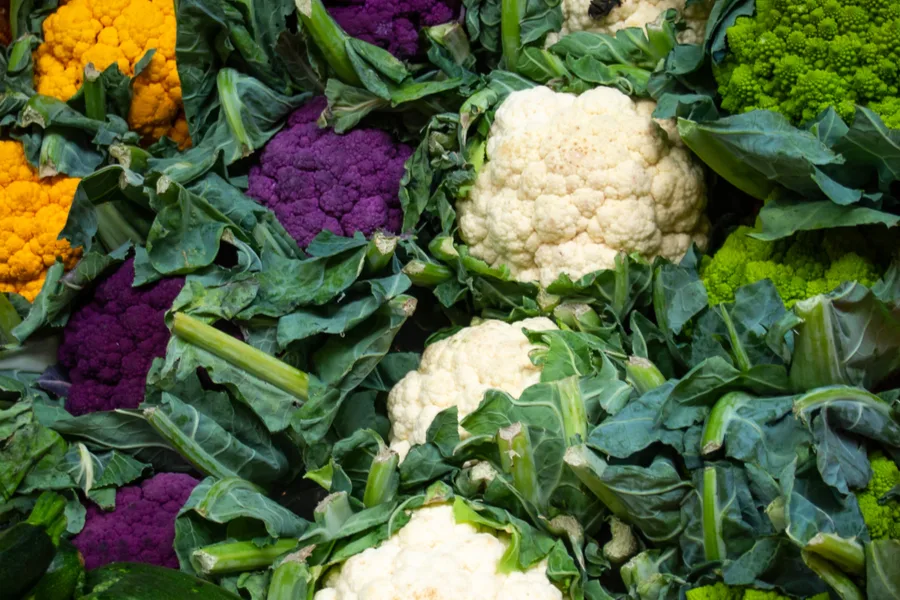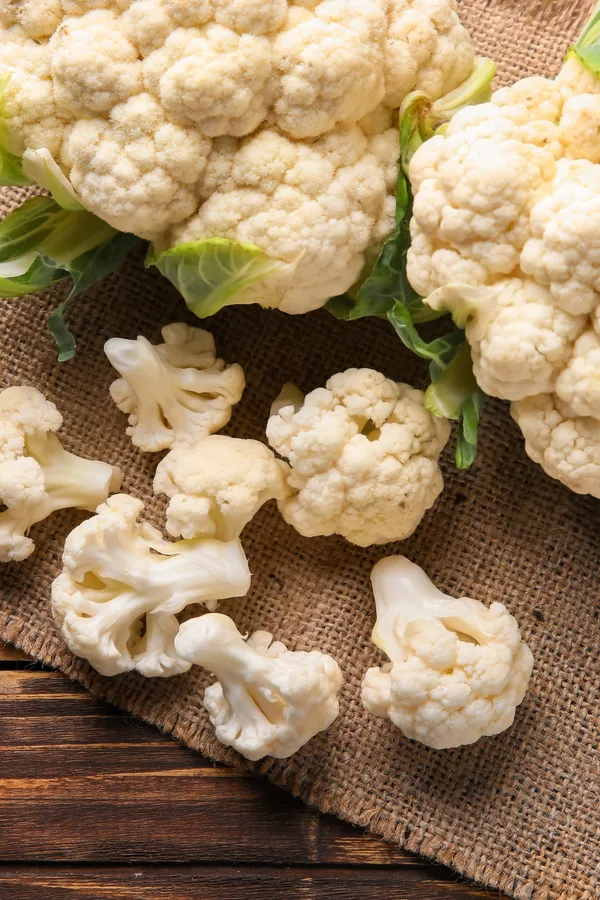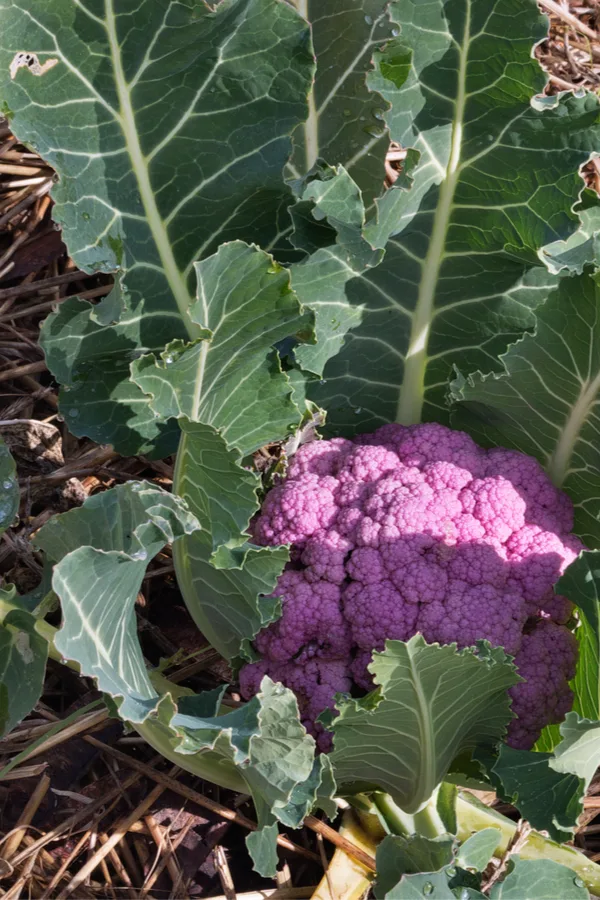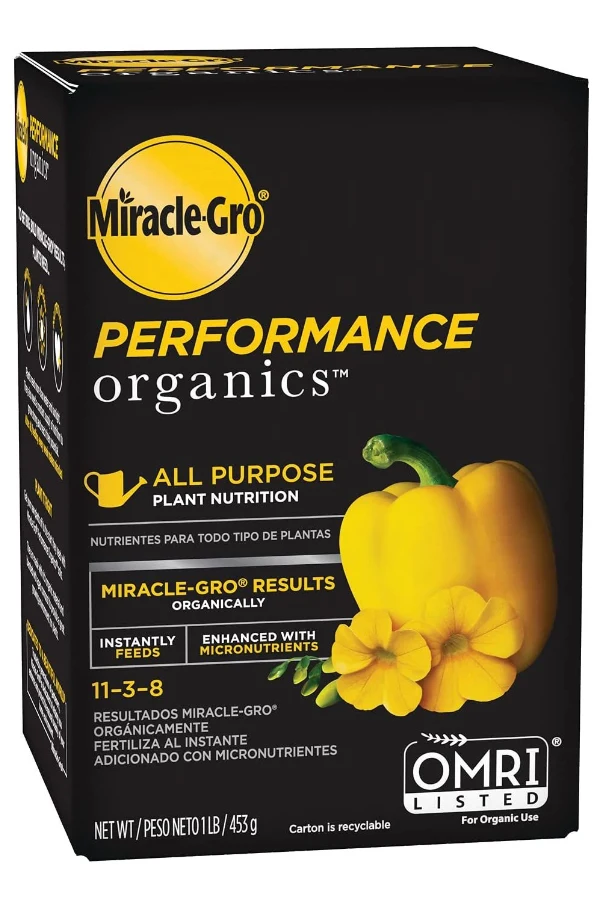One of the biggest complaints among home gardeners when growing cauliflower is finding the secret to keeping the crop bug free. Especially when it comes to getting those tiny little bugs from finding their way into the florets!
Cauliflower certainly has a long list of pests that can attack the plant. Aphids, slugs and mealybug are all in that category. As are snails, whiteflies, beetles and the dreaded cabbage worm.
But just because these pests are fond of cauliflower, it doesn’t mean you can’t protect your crop from them. In fact, armed with a couple of key growing tips and a few great methods for keeping pests away – you can grow a healthy, vibrant bumper crop of cauliflower with ease!

Why Grow Cauliflower
Cauliflower has become more popular than ever in the last few years. Not only for fresh eating, but for making cauliflower rice, pizza and more. It is a great vegetable alternative for those looking for low-carb options.
Cauliflower is a true, one-of-a-kind super food that is power-packed with nutrition. When it comes to vitamin power, it is an incredible source of vitamin C, K and E.
Cauliflower also happens to be rich in minerals – from calcium and potassium, to magnesium, iron, zinc and phosphorous. And all of those nutritious minerals provide a long list of health benefits as well.

For starters, they work to help improve and build the immune system. If that wasn’t enough, all of those nutrients also aid in reducing inflammation, promoting better heart function, and even improving overall brain health as well.
It all adds up to a lot of healthy reasons to grow cauliflower in your own backyard. And is it ever easy to do, especially when you can protect your crop from pests.
With that in mind, here is a look at how plant, maintain and harvest a beautiful crop of cauliflower – and keep it bug free too!
The Secrets To Growing Cauliflower
When To Plant
Cauliflower is a member of the Brassica family, which also happens to include broccoli and kale. Just like its relatives, cauliflower prefers cooler weather when growing.
That means it is best to plant in early spring for a mid-summer crop. In many areas, it can also be planted in late summer for a second fall crop that can be harvested in late fall. Unfortunately, in most areas with a fairly warm summer, a mid-summer crop simply isn’t possible.
When the plant becomes stressed from too much heat, it develops tiny button-sized heads instead of the normal full-bodied florets. The result is a plant with little to harvest, and with florets that have less than a desirable taste.

Spring Planting – The Secrets To Growing Cauliflower
For spring planting, it’s best to start seedlings indoors four to six weeks before the last frost. Once the threat of frost has passed, set plants in rich, fertile soil.
If planting in late summer for a late season crop, sow seeds directly into the garden 10 to 12 weeks before your anticipated first frost of fall.
There is no need for transplants for a summer planting. Plants will mature faster due to the warmer soil, leaving plenty of time for growth and harvest. It is okay to sow when the temperature is still fairly hot in late summer, as the plants will start to mature just as the weather cools.
Cauliflower grows best in rich, fertile and well-draining soil. Amend the planting hole with a 50/50 mixture of compost and soil prior to planting. This will allow for plenty of nutrients to help establish the plant early.

When planting, space plants 18 to 24 inches apart, with at least 24 inches between rows. This will allow the plants plenty of room for good foliage growth, and good circulation as well.
Mulch, Water & Fertilizer – The Secrets To Growing Cauliflower
As soon as you plant, apply a thick three to four inch layer of mulch around the plant. Straw or shredded leaves are both excellent mulches for cauliflower. Mulch helps to regulate soil temperature, and keeps the roots cooler on hot days.
Water is extremely important for good foliage and floret growth. Plants should receive at least two inches of rainfall or the equivalent in watering each week.
When watering, water near the base of the plant and try to avoid watering the leaves. This can promote mildew or sun scald to the foliage and the cauliflower head. It is best to water in the early morning so plants can dry off throughout the day.
Fertilizing – How To Give Your Plants A Boost
After the plant has been in the ground for three to four weeks, it is time to fertilize. A dose of compost tea or liquid organic fertilizer is best. Liquid fertilizers absorb quickly, both through the soil and roots, and through the foliage. Product Link : Organics Liquid Fertilizer

Applying a dose around 4 weeks and 8 weeks of growth should be more than enough to power the plant. Do not over apply fertilizer. Too many nutrients will promote foliage growth, and not a larger harvest.
Much as with watering, fertilize in the early morning. Fertilizing in the mid-day sun can burn the foliage of plants, while evening fertilizing can leave plants damp through the night and vulnerable to mildew.
Protecting Your Crop – Keeping Cauliflower Bug Free
As mentioned at the beginning of the article, cauliflower can be affected by a long list of pests. With that said, there are several ways to keep your cauliflower crop bug free and safe while growing.
When plants are young, by encircling their main stem with a plastic or thick cardboard collar, you can effectively keep slugs from climbing up on the plants. Simply place it around the base stem, and slugs can’t crawl over.
To naturally protect against many other pests, try growing french marigolds within the rows. Marigolds are a wonderful companion crop that help drive a long list of pests away.
In addition, plant your cauliflower near beans, broccoli, brussels sprouts, cucumbers, or corn. All of these crops are considered good companion plants to grow near cauliflower, providing both protection, and beneficial root growth. (See: How To Use Companion Planting In Your Garden)
Protecting Cauliflower Heads From Insects – The Secrets To Growing Cauliflower
If you are prone to heavy infestations, or you want a solution to keep your plants and the cauliflower heads entirely bug free, there are a couple of great methods that work wonders.
For starters, you can cover your young cauliflower heads as they begin to grow with pantyhose. They keep cabbage worms and other pests from getting to the plant. Even better, pantyhose stretches as the head grows, keeping it safe all the while. Simply remove the hose when you are ready to harvest!

For the best and highest protection level of all, you can install garden netting/row covers over your cauliflower crop. These covers are lightweight nets made of super fine mesh. Not only do they protect the crop, they also won’t harm the plants growing habits in the least.
They can be draped over each row, preventing cabbage worms and other pests a chance to get to the plant. Product Link : Garden Netting / Row Covers
Final Thoughts – The Secrets To Growing Cauliflower
As your cauliflower head develops, cover the head with it’s leaves for it’s last few weeks before harvest. This will naturally blanch the head of the cauliflower to ensure that it will be white and tender for eating.
Heads can be harvested when they reach six to eight inches in diameter. When you do harvest, rinse in cold water with a bit of salt to help dislodge any small bugs that may have made it through your garden’s protection plan.
Here is to growing delicious cauliflower this year in your garden! For more vegetable garden tips – check out our Vegetable Garden tab on the website.
Follow Our Facebook Page For Great Gardening Tips And Advice! This Is My Garden Facebook Page
This Is My Garden is a garden website created by gardeners, for gardeners. Jim and Mary Competti have been writing gardening, DIY and recipe articles and books and speaking for over 15 years from their 46 acre Ohio farm. They publish three articles every week, 52 weeks a year. Sign up today to follow via email, or follow along!
